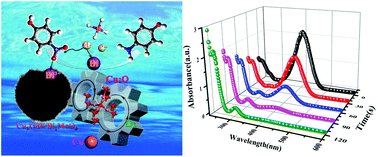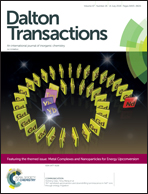A highly selective conversion of toxic nitrobenzene to nontoxic aminobenzene by Cu2O/Bi/Bi2MoO6†
Abstract
Cu2O/Bi/Bi2MoO6, a ternary catalyst, was expertly prepared using an in situ catalytic reduction reaction. All synthetic materials were carefully researched by high-resolution transmission electron microscopy (HRTEM), powder X-ray diffraction (XRD), X-ray photoelectron spectroscopy (XPS), and ultraviolet-visible diffuse reflection spectra (UV-vis DRS). The elemental Bi was generated from Bi2MoO6 (BM) after a circular reduction catalysis process of 4-nitrophenol (4-NP) and evenly dispersed in the surface of the leaves of BM flower-like spheres, which was simultaneously coated with Cu2O. The multiphase samples achieved highly effective catalytic activity (10 053.6 min−1 g−1) for the conversion of the highly toxic 4-NP to the less toxic aminobenzene, compared to the single phase Cu2O and BM nanoparticles. Moreover, the excellent reusable stability of the compositing samples was confirmed by executing successive recycling experiments. It was proposed that the Bi3+/Bi0 pairs were the key active species which were produced via prompt reduction and oxidation with the help of Cu2O. The active interfacial contact between copper oxide/metallic Bi/BM (Cu2O/Bi/BM) in the designed sandwich structure facilitated the production and maintained the balance of Bi3+/Bi0 pairs, contributing to the enhanced activity and excellent stability.



 Please wait while we load your content...
Please wait while we load your content...